
Let’s be real: there just aren’t that many flying electric boats in the world. But even if there were, the Candela C-8 would undoubtedly be at the top of the list for premium models. Not only is it competing well against (and sometimes outselling) internal combustion engine boats in its class, but the Swedish boat is racking up sales all over the world ahead of the first shipments later this year.
Candela was kind enough to invite me out to Stockholm to spend a few days on the first ever C-8 prototype, and now you get to join along with me as I relive the amazing experience of flying silently over the Swedish archipelago.
In case you haven’t heard of Candela before, here’s a quick crash course. Basically, this Swedish boat maker builds high-tech electric boats that use significantly less energy than any other boat. They achieve it by flying on hydrofoils, which are super efficient. That means they can have a much smaller battery and still go farther than other electric boats.
Other advantages include an ultra-smooth experience without smashing on waves, a silent ride and a distinct lack of exhaust smell throughout the day.
Basically, every part of traditional boating that isn’t pleasant is improved by Candela’s electric hydrofoil design.
Having previously tested Candela’s first flying electric boat known as the Candela C-7, I had a bit of an idea of what I was getting myself into on this new boat.
That original C-7 was already a blast to use, flying just under a meter out of the water on a pair of high-tech computer-controlled hydrofoils.
But the C-8 has been promising even more ever since its unveiling late last year. That means a bigger boat, higher ride height, ability to tackle even larger waves and wakes, a fully-enclosed cabin for sleeping or using the head (or both!), and an even more premium experience up on the 02 deck.
Check out the video of my first experience aboard the C-8 below, then keep reading for all of the details!
Candela C-8 First Ride Video
Major updates on the C-8
There’s a long list of updates on the Candela C-8, but here are the main ones.
First of all, the boat uses Candela’s new in-house developed C-POD motor. This thing is a technological and engineering masterpiece. It uses a pair of counterrotating electric motors, the second with a hollow shaft, to power two propellors and provide a combined 50 kW (67 hp) of power. The entire unit is underwater, which both helps with cooling and means that the already quiet motors are muffled to essentially silence.
The boat is also produced in an entirely different fashion. The original C-7’s lightweight carbon frame hull was a complicated assembly of dozens of smaller parts. The C-8’s is now largely one massive carbon fiber unit, greatly simplifying and streamlining the production process. Which is good, because there are hundreds of orders in line for the boat and Candela is quickly scaling up production to meet the demand.
The hull shape now allows for the hydrofoils to be fully retracted out of the water when docked, meaning they stay clean and without marine growth that could cut into their efficiency.
Next, the boat is physically larger than the C-8 and features that enclosed cabin I mentioned. Two adults could sleep in there quite comfortably, and two adults with two children could have a more cramped overnight. Realistically though, it’s probably more of a nice hangout space away from the sun, and also a private place to answer nature’s call or take a shower, should you choose to install those optional pieces of gear.
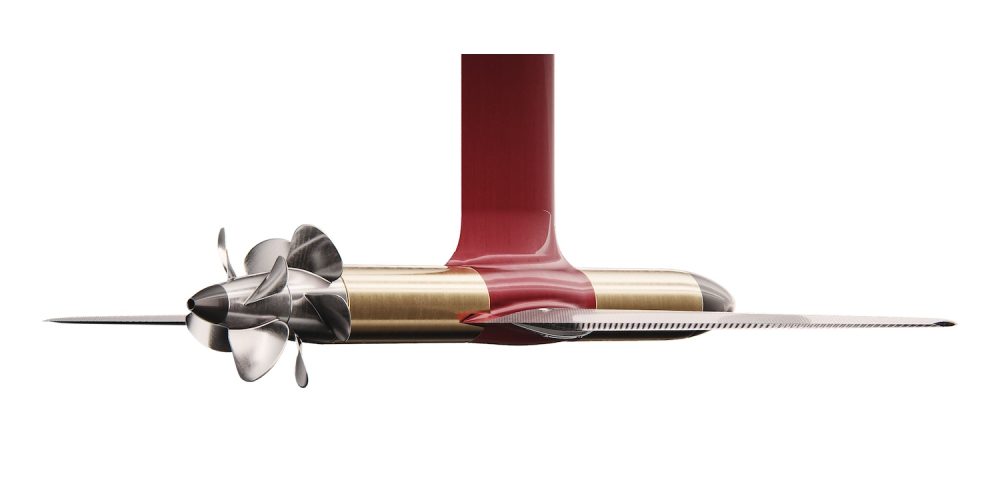
The technology in the C-8 is also much more advanced, including route following and autonomous flying modes that are currently still in development. Think of it as Tesla Autopilot, but for a flying electric boat.
In fact, the beauty of Candela’s operation is that they design both the control software as well as the hardware (as in the boat, its hydrofoils and its drive systems – basically everything but the batteries themselves). The reason that is so important is because Candela is thus able to make the C-8 incredibly user friendly, to the point where I have no professional boating experience and yet I was flying it literally within two minutes of pulling out of the dock.
We motored out of the harbor and Candela’s Mikael Mahlberg offered me the captain’s chair. “Let’s take off,” he said with a smile. And that was about it. Relying on what I learned from the C-7, I chose a comfortable looking stretch of water, lined the rudder up straight and mashed the throttle forward like a Tekken joystick. The boat sprung to life and we soared forward. Within a few seconds we were surpassing 15 or 16 knots, the point at which the computer takes over flight controls. As we accelerated, I heard the splashing of water against the hull soften and then disappear. Simultaneously, my view changed as I rose up above the water like I was standing on a step ladder.
I hadn’t really done anything other than told the boat to go, and the computers were handling everything else. We were flying smoothly as the actuators made tiny adjustments to the hydrofoils up to 100 times per second, far too fast for me to notice. It gave this effortless feeling that betrayed the complexity of what was actually happening beneath me.
I was also amazed at how efficient the boat became out of the water. We achieved the same efficiency (around 1-1.2 kWh per nautical mile) at 5 knots and at 20 knots. That’s simply unheard of. Generally your efficiency would plummet as your speed increased, but the difference between shoving water out of way at 5 knots and flying over it at 20 knots meant that we weren’t losing any range by going four times as fast.
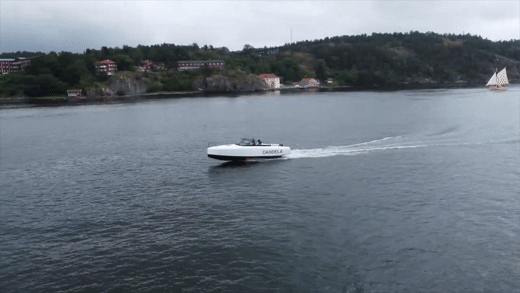
As we quickly surpassed 20 knots, I started to throttle it back on Mikael’s advice. The C-8 is designed to do 30 knots quite easily (35 mph or 55 km/h), but this was literally the first C-8 off the line and thus was technically still a production prototype. The hardware was mostly there, but the software was still in something of a beta package. The engineers are still tuning the flight controller, especially above 20 knots, to create the smoothest possible ride.
Once I started going a bit too fast, I could feel the boat taking longer pitch oscillations, which is exactly what the engineers are smoothing out right now. We even had a few ‘unanticipated landings’, which is when the boat comes down from the hydrofoils and you return to being a normal boat with a big splash. It’s not something that will happen on the final production series boats, but since I was on an early production prototype, I had the pleasure of experiencing the little bugs that get worked out before boats get their most recent software updates. It’s also an interesting chance to point out that the worst thing that happens in a ‘crash’ is that you simply go back to being a non-flying boat. It’s like when an escalator turns off and simply becomes stairs. Not ideal, but a pretty convenient failure condition, all things considered.
Of the two days I spent on the boat, we only dropped down off the foils a few times on the first day, and the second day worked like a charm. The night before my first ride saw new actuators installed in the hydrofoils, and thus there was a bit more tuning left to be done. Perhaps the night before the first journalist takes your boat out for a test ride isn’t the time to be making major changes, but that’s life. You fly the boat you have.
Even so, I was still amazed by just how darn smooth the flight felt. We passed over choppy water and boat wakes left by large ferries, each time clearing them with ease. The largest ferry wakes sometimes causes a slight pitch oscillation, but nothing that would have made me spill a drop of coffee. If you’ve ever crossed a major wake in a typical boat, you know that you could be at risk of losing your entire cup.
Ironically, while I was impressed with how smoothly we were flying over rough water, Mikael was having almost the opposite reaction. He knew it could be even better, and that it would be soon, whereas I was already grinning like an idiot from what was essentially a prototype experience. I guess the point is that if it’s already this impressive with plenty more work to be done, then the final production units are probably going to feel like magnetic levitation.
That’s huge news for anyone who suffers from sea sickness, too. I’m sorry to say that I have the affliction, which means that ferry rides and other boating excursions can often get a bit uncomfortable for me. But Candela’s boats don’t rock or sway with the waves and swells, so seasickness suffers won’t be affected (as long as they can last long enough to make it away from the dock).
Speaking of which, the lack of a boat wake means that Candela’s boats don’t have to slow down in no wake areas that are set up for shoreline protection. In areas like Venice, Italy where boat wakes have wreaked havoc, Candela’s boats get a pass and can fly through at full speed. It should be noted that some no-wake zones are set up for marine life protection, such as in Florida manatee areas. In these situations, you should definitely come down from the foils and go slower. But in areas where no wake zones are purely for protecting boats, docks and properties along the shore, the canoe-equivalent wake of a C-8 means you don’t have to slow down.
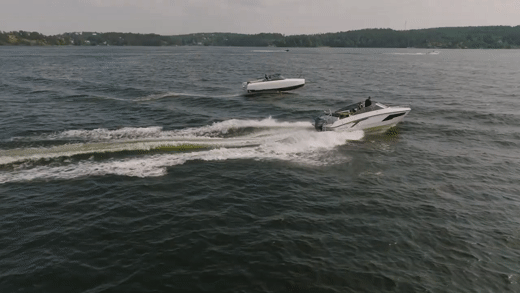
As we soared around the archipelago, I took the opportunity to test out the C-8’s turning radius. Damn, this thing is tight! I was a bit hesitant at first to pull it too tight, taking more gentle turns as the display’s readout told me I was passing 5 and then 6 degrees of roll.
Mikael urged me to stop babying it and so I pulled harder on the wheel, feeling the g’s as we cut sharper against the water. I’m sure my eyes were going wide as we passed 12 degrees of roll on the screen, but Mikael seemed calm so I tried to take that as a good sign.
I don’t know how much farther I could have pushed it, but that boat was certainly ready to deliver. I thought a flying boat would need a wider arc, but I was amazed how tight we could turn while still flying above the surface.
I feel like I’m at a loss for appropriate words to describe this feeling, which is shame because that’s literally my job. But the sensation of driving hard into a tight turn on a silent flying electric boat is just not something that the English language has developed sufficient words to describe. It’s equal parts unnatural and smooth feeling that had me feeling like a Tom Cruise of the seas, top-gunning my way through the air at an altitude of about 3 feet.
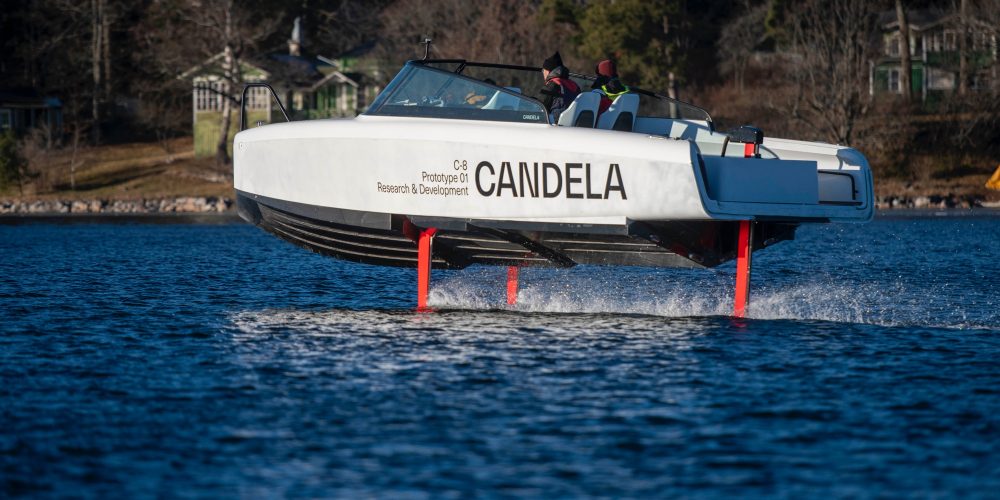
With a bit shy of 50 kWh of battery, we spent a couple hours on the water broken up by short stops to swap cameras and snatch drones out of the sky.
I didn’t receive the boat with a full charge and I didn’t return it on empty either, though I’m not entirely sure how long the run time would be if I had attempted to do both.
Three-phase charging on a dock can get the boat around 25% of its charge in an hour. A two-hour lunch stop could add 50% to your state of charge. The C-8 will also have a DC fast charging option which could ‘fill the tank’ in under an hour, though that likely won’t be necessary for many owners who use their boats for weekend fun but not all day continuous rides.
If you do need to recharge your boat quickly though, they can get you there with DC fast charging as an option.
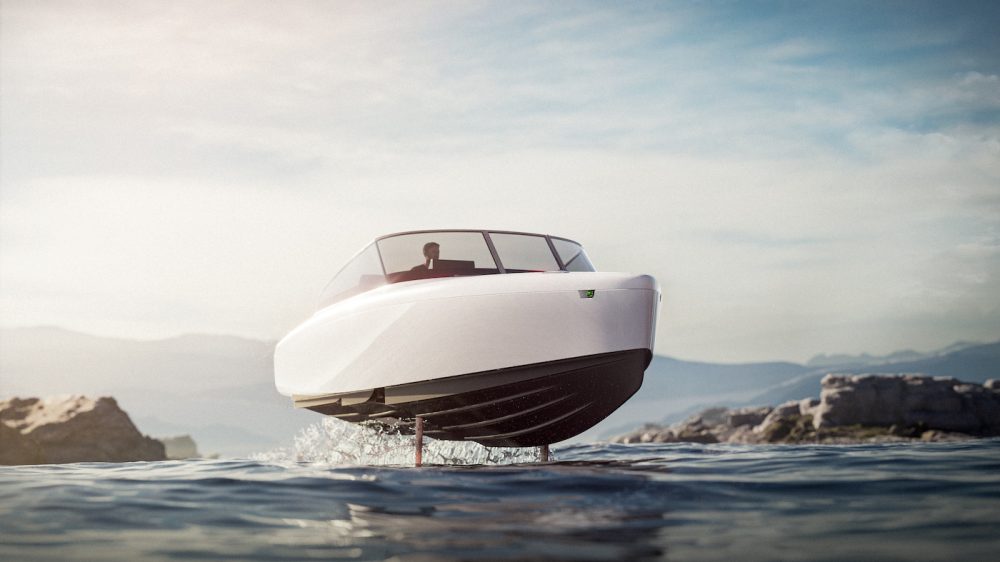
The last surprise for me came when it was time to head back into the harbor and approach the dock. The C-8 is surprisingly easy to maneuver. If you’ve ever docked a motorboat before, you’ll know that it’s not as easy as parking a car. It’s not quite as difficult as docking a space ship, but it has some similarities. Unlike immediate responses to car inputs, slow-speed boat docking is like slow motion controlling. You give rudder or throttle and wait a few seconds for your inputs to do anything.
But with the C-8, the fly-by-wire steering and powerful instantaneous thrust of the C-POD make maneuvering the boat at slow speeds much easier. Even without the assistance of a bow thruster, I was able to easily dock the boat on my first try, though Mikael did give me some helpful cues.
Ultimately, the experience of testing the C-8 only further cemented what I already knew: That Candela’s flying electric boats are the future of boating in general. They can go further with less battery, they offer a better ride and they are simply a pleasure to go boating with. There’s a reason that ferries and water taxis are going this direction, it’s simply better.
It’s not cheap, coming in at around €300,000, but then again that’s the price of comparable premium gas-powered boats in this 28-29 foot size class. So if you already have boat-buying money, then a boat like this might actually be in your budget. It surely isn’t in mine, but I wouldn’t mind taking the Candela ferry in Stockholm next year!
Subscribe to Electrek on YouTube for exclusive videos and subscribe to the podcast.
Author: Micah Toll
Source: Electrek



